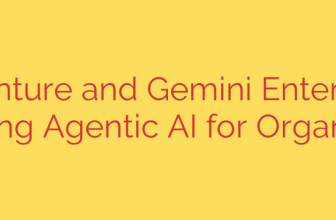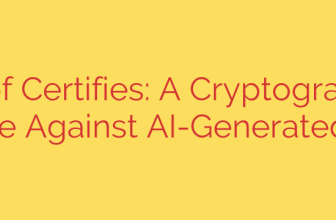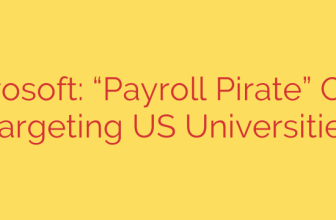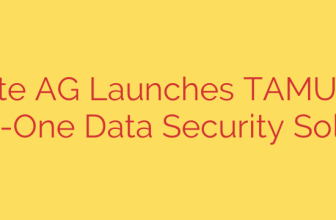
AI in Cybersecurity: The Ultimate Weapon Against SOC Burnout and Alert Fatigue
In the world of cybersecurity, the Security Operations Center (SOC) is the digital front line. Day and night, dedicated analysts stand guard against an ever-increasing barrage of cyber threats. But this relentless pressure comes at a cost. Many SOC teams are overwhelmed, facing a crisis of burnout and alert fatigue that puts their organizations at significant risk.
The problem isn’t a lack of skill or dedication; it’s a matter of scale. Modern threat landscapes generate a volume of data and alerts that is simply impossible for humans to manage alone. Fortunately, a powerful ally has emerged to turn the tide: Artificial Intelligence. By integrating AI into security operations, organizations can empower their teams, reduce burnout, and build a more resilient defense.
The Crushing Weight of Alert Fatigue
At the heart of the SOC burnout problem is alert fatigue. A typical SOC is flooded with thousands of security alerts every single day. Analysts must investigate each one to determine if it’s a genuine threat or a harmless false positive.
The consequences are severe:
- Missed Threats: When analysts are overwhelmed, it becomes easier for a critical alert to get lost in the noise. A single missed threat can lead to a catastrophic data breach.
- Slower Response Times: Sifting through countless false positives slows down the entire incident response process. In cybersecurity, every second counts, and delays give attackers a crucial advantage.
- Analyst Burnout: The constant high-pressure environment, combined with the repetitive nature of investigating benign alerts, leads to exhaustion and high turnover rates. Losing experienced security talent is a major blow to any organization’s security posture.
Relying solely on human vigilance against machine-speed attacks is no longer a sustainable strategy. This is where AI transforms from a buzzword into an essential operational tool.
How AI Transforms Security Operations
AI isn’t about replacing human analysts. It’s about augmenting their skills and freeing them from the repetitive, low-value tasks that cause burnout. AI acts as a force multiplier, allowing a small team to perform with the efficiency and reach of a much larger one.
Here’s how AI directly combats the challenges facing a modern SOC:
1. Intelligent Triage and Prioritization
Instead of treating every alert equally, AI-powered platforms use machine learning algorithms to analyze and correlate data from countless sources in real-time. The system learns to distinguish between routine network activity and indicators of a sophisticated attack. As a result, it can automatically filter out the vast majority of false positives and prioritize the handful of genuine threats that require immediate human attention. This allows analysts to focus their expertise where it matters most.
2. Automating Repetitive Investigation Tasks
Many initial investigation steps—like checking IP reputations, analyzing file hashes, or cross-referencing threat intelligence feeds—are time-consuming but follow a predictable pattern. SOAR (Security Orchestration, Automation, and Response) platforms leverage AI to automate these workflows. An alert can trigger an automated playbook that gathers all necessary context, enriches the data, and presents a complete picture to the analyst, cutting investigation time from hours to minutes.
3. Uncovering Hidden and Evolving Threats
The most dangerous attackers are often those who use novel techniques to fly under the radar of traditional rule-based security systems. AI excels at behavioral analysis, establishing a baseline of normal activity for users and systems. When it detects a deviation—even a subtle one—it can flag it as a potential threat. This empowers analysts to move from a reactive posture to proactive threat hunting, identifying and neutralizing attacks before they can cause damage.
4. 24/7 Vigilance Without Burnout
Cyber threats don’t operate on a 9-to-5 schedule, but your human analysts need rest. AI provides persistent, around-the-clock monitoring without ever getting tired or distracted. It handles the initial line of defense 24/7, ensuring that threats are detected and contained instantly, regardless of the time of day.
Actionable Steps for Integrating AI into Your SOC
Implementing AI is a strategic move that requires planning. To successfully strengthen your security operations, consider these practical steps:
- Identify Your Biggest Pain Points: Start by determining where your SOC is struggling the most. Is it the sheer volume of alerts? The time spent on manual investigations? The difficulty in hiring skilled personnel? Pinpointing the primary problem will help you select the right AI tools.
- Invest in Integrated Platforms: Look for solutions like Next-Gen SIEM, XDR (Extended Detection and Response), or SOAR platforms that centralize data and automate workflows. An integrated system provides a single pane of glass, which is far more effective than juggling multiple, disconnected tools.
- Empower Your Team, Don’t Replace It: Frame the adoption of AI as a way to enhance your team’s capabilities. Provide training on how to work alongside the new tools, interpret AI-driven insights, and focus on higher-level tasks like strategic threat modeling and complex incident resolution.
- Start Small and Scale: You don’t have to automate everything at once. Begin by implementing automated playbooks for the most common and time-consuming alert types. As your team gains confidence and sees the benefits, you can gradually expand the scope of automation.
The Future of the SOC is Smarter, Not Harder
The battle against cybercrime is a marathon, not a sprint. By equipping SOC teams with the power of AI, organizations can create a sustainable, effective, and resilient security posture. The goal is to shift the focus from manual toil to strategic oversight, allowing human intelligence to be applied to the most complex and creative challenges. By embracing this powerful partnership between human and machine, we can build a future where our digital defenses are smarter, faster, and finally able to outpace the threats they face.
Source: https://www.helpnetsecurity.com/2025/10/10/dropzone-report-soc-analysts-using-ai/








